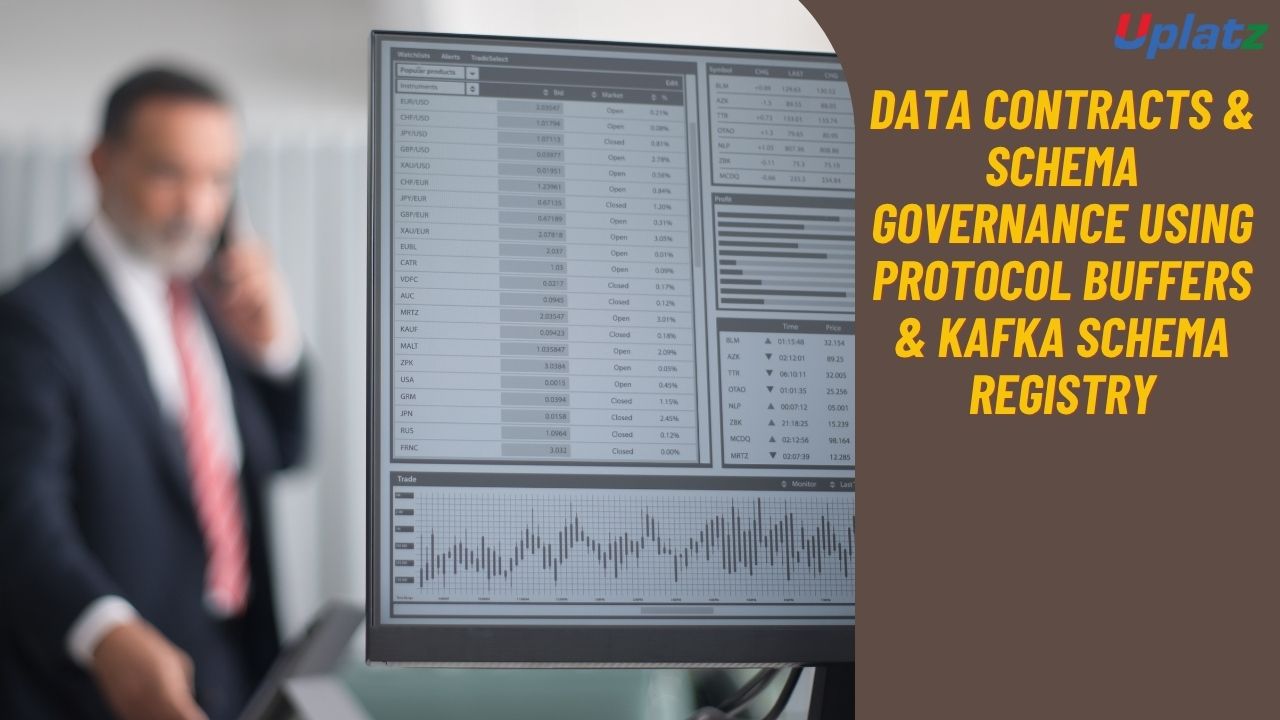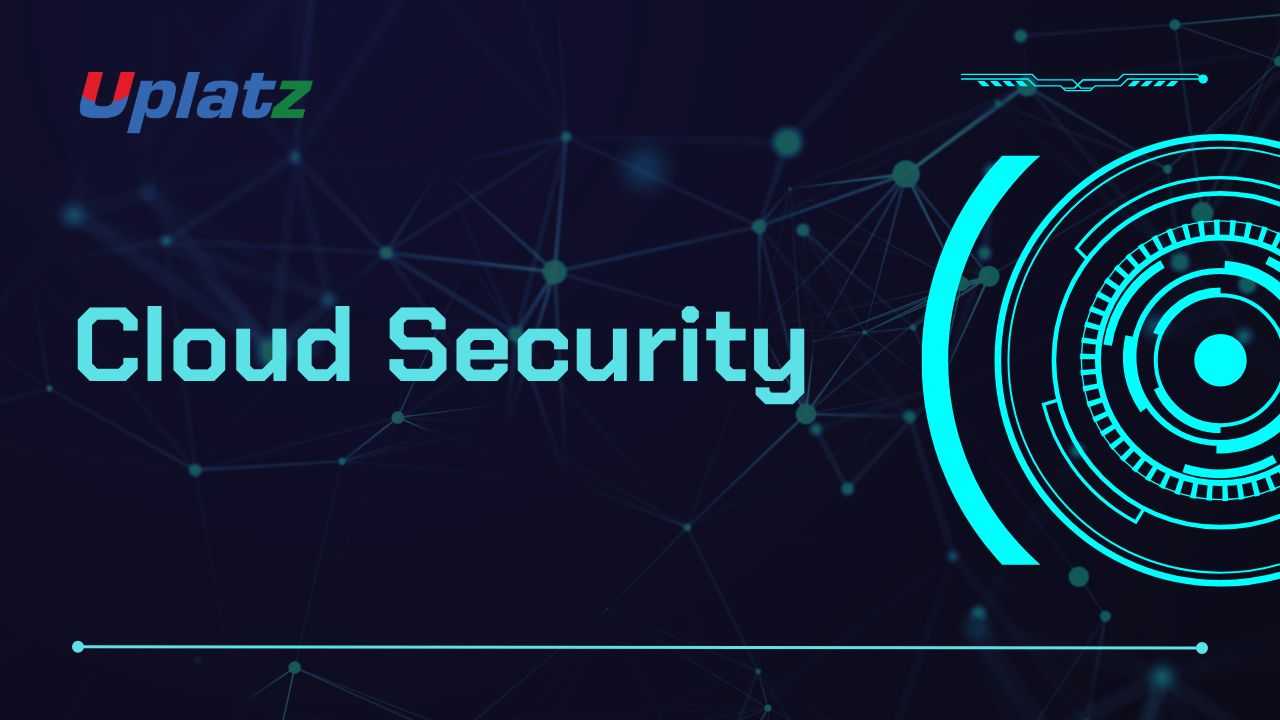OpenTelemetry
Master OpenTelemetry for unified observability and instrumentation of modern cloud-native applications.Preview OpenTelemetry course
Price Match Guarantee Full Lifetime Access Access on any Device Technical Support Secure Checkout Course Completion Certificate 91% Started a new career
BUY THIS COURSE (
91% Started a new career
BUY THIS COURSE (GBP 12 GBP 29 )-
 79% Got a pay increase and promotion
79% Got a pay increase and promotion
Students also bought -
-

- Data Engineering with Talend
- 17 Hours
- GBP 12
- 540 Learners
-

- Data Contracts & Schema Governance using Protocol Buffers & Kafka Schema Registry
- 10 Hours
- GBP 12
- 10 Learners
-

- Cloud Security
- 10 Hours
- GBP 12
- 10 Learners

As cloud architectures evolve toward microservices, Kubernetes, and serverless models, maintaining visibility across distributed systems has become one of the greatest challenges in modern software engineering. OpenTelemetry (OTel) has emerged as the open-source solution that unifies tracing, metrics, and logging into a single observability framework — empowering teams to monitor, diagnose, and optimize complex applications at scale.
The OpenTelemetry: Unified Observability & Instrumentation course is a comprehensive, self-paced program designed for DevOps engineers, Site Reliability Engineers (SREs), cloud professionals, and developers who want to master the full spectrum of observability in today’s cloud-native world. From understanding how telemetry data flows through distributed systems to implementing end-to-end tracing in production, this course bridges foundational concepts with real-world implementation.
🔍 What is OpenTelemetry?
OpenTelemetry is an open-source, vendor-neutral observability framework jointly supported by the Cloud Native Computing Foundation (CNCF). It defines a consistent, unified standard for collecting and exporting telemetry data — traces, metrics, and logs — from distributed systems.
Before OpenTelemetry, teams relied on proprietary tools or fragmented SDKs for instrumentation, making integration and correlation between data sources difficult. OTel standardizes this process by providing:
-
Unified APIs and SDKs for consistent instrumentation across languages.
-
Context propagation to correlate traces between services.
-
Collectors and exporters that send telemetry data to backends such as Prometheus, Jaeger, Zipkin, Grafana Tempo, or commercial tools like Datadog, New Relic, and Splunk.
This unified approach allows organizations to collect once and observe everywhere — building a single source of truth for system performance and reliability.
⚙️ How Does OpenTelemetry Work?
OpenTelemetry operates on three core data types — traces, metrics, and logs — representing the key pillars of observability.
-
Traces capture the lifecycle of a request as it flows through microservices, enabling root-cause analysis when latency or failure occurs.
-
Metrics provide quantitative data (CPU usage, request rates, error counts) for monitoring performance trends.
-
Logs offer detailed, event-level context that complements traces and metrics.
These signals are collected via OTel SDKs embedded in your applications or through auto-instrumentation agents that monitor runtime behaviour without modifying source code. The data then flows through the OpenTelemetry Collector — a central pipeline that receives, processes, and exports telemetry to one or more backend systems.
This flexible architecture decouples data collection from data visualization, ensuring interoperability and scalability across different observability platforms.
🏭 How OpenTelemetry is Used in the Industry
Modern organizations rely on OpenTelemetry to achieve unified observability across distributed systems. It has become the de facto standard for cloud-native monitoring, widely adopted by companies such as Google, Microsoft, Amazon, Netflix, Uber, and Red Hat.
Common use cases include:
-
Distributed Tracing: Visualizing the full path of a request across dozens of microservices.
-
Performance Optimization: Identifying latency bottlenecks and high-load endpoints in real time.
-
Error Analysis: Linking traces and logs for faster debugging and incident response.
-
Cloud Migration Monitoring: Tracking dependencies and service health during cloud transitions.
-
DevOps Automation: Integrating telemetry into CI/CD pipelines for proactive alerting and release validation.
By adopting OpenTelemetry, engineering teams reduce tool fragmentation, improve reliability, and gain end-to-end visibility from the user interface to the database query.
🌟 Benefits of Learning OpenTelemetry
Mastering OpenTelemetry provides critical advantages for anyone working with modern infrastructure or software systems:
-
Vendor Neutrality: Gain freedom from proprietary monitoring tools — collect telemetry once, send it anywhere.
-
Unified Observability: Correlate logs, metrics, and traces across diverse systems and environments.
-
Deep Insight into Distributed Systems: Identify and resolve issues faster with full-stack visibility.
-
Career Growth: Expertise in observability and OpenTelemetry is one of the most in-demand DevOps skills today.
-
Scalability and Reliability: Build systems designed for proactive monitoring and continuous performance improvement.
As organizations shift toward SRE practices and AI-driven monitoring, OpenTelemetry expertise positions you as a key contributor in designing intelligent, resilient infrastructures.
📘 About This Course
This course offers a progressive learning path, combining conceptual depth with practical implementation. You’ll start by understanding observability fundamentals, then move on to hands-on instrumentation, pipeline configuration, and real-world deployment.
Each module builds on the previous one, ensuring clarity and confidence as you move from theory to execution.
You’ll Learn How To:
-
Understand observability principles and the OpenTelemetry architecture.
-
Instrument applications using OpenTelemetry SDKs and auto-instrumentation.
-
Collect and export traces, metrics, and logs from multiple languages — Python, Java, Node.js, and Go.
-
Configure and deploy the OpenTelemetry Collector for data ingestion and routing.
-
Integrate OTel with backends such as Prometheus, Jaeger, Grafana, and Datadog.
-
Implement distributed tracing in microservices and analyze real transaction paths.
-
Deploy observability pipelines in Kubernetes, serverless, and multi-cloud environments.
-
Monitor and debug systems through dashboards, alerts, and correlation analysis.
The course emphasizes hands-on learning through guided labs, mini-projects, and code-along sessions that mirror real DevOps workflows.
🧩 Course Projects and Real-World Applications
By completing this course, you’ll work on practical projects such as:
-
Setting up an end-to-end tracing pipeline for a microservices architecture.
-
Creating dashboards and alerts for key performance metrics.
-
Implementing log correlation for faster debugging.
-
Building a Kubernetes observability stack with the OpenTelemetry Collector.
-
Integrating CI/CD observability hooks to track deployment impact.
Each project reinforces practical skills used by real engineering teams in production environments.
👩💻 Who Should Take This Course
This course is ideal for:
-
DevOps Engineers implementing observability in CI/CD and cloud pipelines.
-
Site Reliability Engineers (SREs) managing distributed systems and performance monitoring.
-
Cloud Architects and Developers building microservices or containerized apps.
-
Data and Platform Engineers standardizing telemetry pipelines across teams.
-
Students and Researchers exploring observability frameworks and system monitoring.
No prior experience with monitoring tools is required — all concepts are explained with clear visuals, code samples, and practical examples.
🧭 Course Format and Delivery
The self-paced format gives you complete flexibility to learn at your own rhythm. Each module includes:
-
HD video lessons with live demonstrations.
-
Interactive labs and step-by-step setup guides.
-
Downloadable configuration templates and example code.
-
Checkpoints and quizzes to test comprehension.
-
Real-world case studies of observability in enterprise systems.
You’ll also gain lifetime access to the course content, including updates reflecting new OpenTelemetry releases and best practices.
🌐 Why Choose This Course
-
Up-to-Date Content: Covers OpenTelemetry 1.x with latest Collector and SDK updates.
-
Tool-Agnostic Skills: Learn once, apply across any observability platform.
-
Project-Based Approach: Every module ends with tangible outcomes.
-
Career Advancement: Gain skills aligned with DevOps, SRE, and cloud monitoring roles.
-
Community-Backed Technology: OpenTelemetry is supported by CNCF and used globally across industries.
By completing this course, you’ll not only understand observability theory but also be ready to implement it in production — building systems that are transparent, traceable, and trustworthy.
🚀 Final Takeaway
In an era of distributed, event-driven systems, visibility is power. OpenTelemetry gives you that power — enabling complete insight into how your applications behave, perform, and interact.
This course equips you with the knowledge and confidence to design observability pipelines, integrate them into modern DevOps ecosystems, and ensure reliability across multi-service architectures.
By mastering OpenTelemetry, you’ll stand out as a next-generation DevOps professional, capable of transforming complex systems into transparent, measurable, and optimizable infrastructures.
Course/Topic 1 - Coming Soon
-
The videos for this course are being recorded freshly and should be available in a few days. Please contact info@uplatz.com to know the exact date of the release of this course.
By completing this course, you will:
- Understand OpenTelemetry architecture and its components (SDK, Collector, Exporters).
- Instrument applications manually and with auto-instrumentation libraries.
- Configure OpenTelemetry Collector for data pipelines.
- Implement distributed tracing in microservices and serverless environments.
- Capture application metrics for performance monitoring.
- Configure logging with OpenTelemetry for unified observability.
- Export telemetry to tools like Jaeger, Prometheus, Grafana, and Datadog.
- Deploy OpenTelemetry in Kubernetes and cloud-native environments.
- Optimize telemetry pipelines for scale and performance.
- Troubleshoot and fine-tune observability in production systems.
- What is Observability?
- Evolution from Monitoring to Observability
- OpenTelemetry Overview
- Key components: SDKs, APIs, Collector, Exporters
- Data types: Traces, Metrics, Logs
- Manual instrumentation
- Auto-instrumentation for supported languages
- Distributed tracing concepts
- Setting up traces for microservices
- Context propagation
- Capturing performance metrics
- Exporting to Prometheus & Grafana
- Unified logs integration
- Correlating logs with traces
- Collector architecture and pipelines
- Processors, receivers, and exporters
- Exporting telemetry to Jaeger, Zipkin
- Connecting to commercial APM tools
- OTel in containerized workloads
- Service mesh integration (Istio/Linkerd)
- AWS Lambda, Azure Functions, GCP Functions
- Instrumenting CI/CD pipelines
- Observability-as-code
- Sampling strategies for traces
- High-performance telemetry pipelines
- Microservices observability with tracing and metrics
- Full-stack telemetry integration (frontend + backend)
- Cloud-native observability dashboard
-
Scaling OpenTelemetry in production
-
Common pitfalls and troubleshooting
Upon completion, learners will receive an Industry-Recognized Certificate of Completion from Uplatz in OpenTelemetry. This certificate validates expertise in observability, tracing, metrics, and logs collection for cloud-native applications. It signals proficiency in designing end-to-end observability pipelines and integrating OTel into enterprise-grade DevOps environments. Certification holders can confidently showcase skills to employers seeking observability engineers, SREs, and DevOps specialists in cutting-edge technology domains.
- Observability Engineer
- Site Reliability Engineer (SRE)
- DevOps Engineer
- Cloud Monitoring Specialist
- Instrumentation Engineer
- What is OpenTelemetry and why is it important?
OpenTelemetry is an open-source framework for standardized telemetry collection (traces, metrics, logs) in distributed systems, crucial for unified observability. - How does OpenTelemetry differ from traditional monitoring tools?
Unlike tool-specific agents, OpenTelemetry offers vendor-neutral APIs and SDKs, enabling flexible backend integration and consistent instrumentation. - What are the core components of OpenTelemetry?
SDK/APIs (instrumentation), Collector (pipeline), and Exporters (integration with backend tools). - Explain the role of the OpenTelemetry Collector.
The Collector receives telemetry data, processes it (e.g., filtering, batching), and exports it to analysis backends. - How does distributed tracing work in OpenTelemetry?
It tracks requests across services, propagating context (trace IDs) to correlate spans and visualize latency bottlenecks. - How do you instrument a Python or Java application with OpenTelemetry?
Install language SDKs, add instrumentation libraries, configure exporters, and initialize tracing in code or via auto-instrumentation. - How are metrics collected and exported in OTel?
Metrics APIs capture data points, which are processed by the Collector and sent to tools like Prometheus or Grafana. - What is context propagation and why is it important?
Context propagation ensures trace identifiers flow across services, allowing correlation of spans in distributed systems. - How do you deploy OpenTelemetry in Kubernetes?
Use Helm charts or manifests to deploy the Collector as DaemonSet or sidecar and configure pipelines for workloads. - What are common challenges with OpenTelemetry?
Challenges include handling telemetry volume, sampling traces efficiently, and managing integration complexity across environments.









